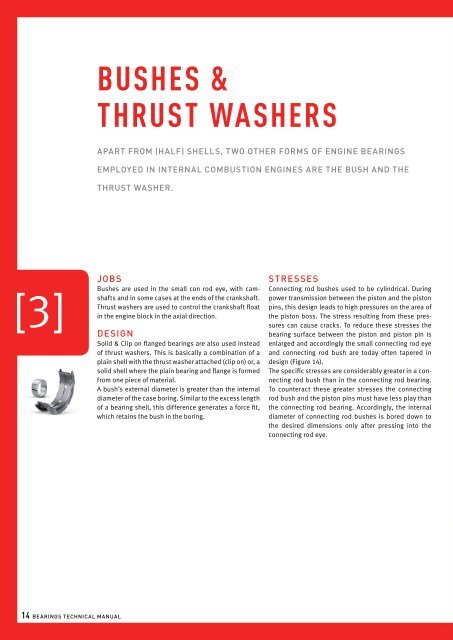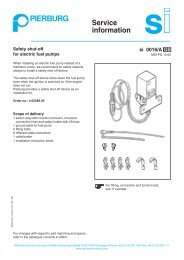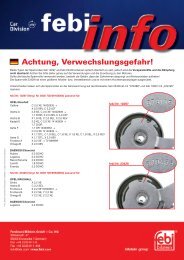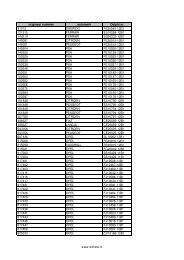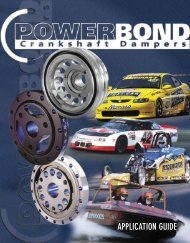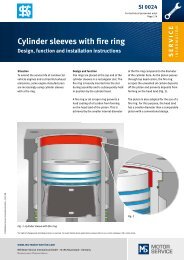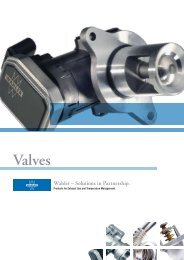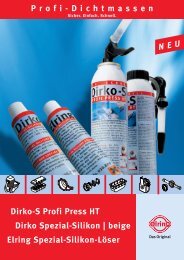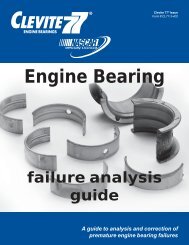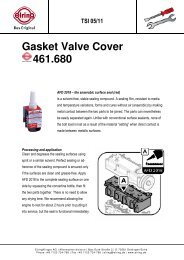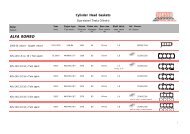EvEry bEaring you nEEd
EvEry bEaring you nEEd
EvEry bEaring you nEEd
You also want an ePaper? Increase the reach of your titles
YUMPU automatically turns print PDFs into web optimized ePapers that Google loves.
Bushes &<br />
thrust washers<br />
Apart from (half) shells, two other forms of engine bearings<br />
employed in internal combustion engines are the bush and the<br />
thrust washer.<br />
[fig.12] Dimensions and characteristics<br />
of a small end bush<br />
[1] outer diameter<br />
[2] inner diameter<br />
[3] oil groove<br />
[4] length<br />
[5] oil bore<br />
[6] joint<br />
[7] clinch<br />
[4]<br />
[5]<br />
[fig.13] Dimensions and characteristics<br />
of a thrust washer<br />
[1] wall thickness<br />
[2] sliding surface<br />
[3] lubricating groove<br />
[4] locating lug<br />
[1]<br />
[7]<br />
[3]<br />
[2]<br />
[3]<br />
Jobs<br />
Bushes are used in the small con rod eye, with camshafts<br />
and in some cases at the ends of the crankshaft.<br />
Thrust washers are used to control the crankshaft float<br />
in the engine block in the axial direction.<br />
Design<br />
Solid & Clip on flanged bearings are also used instead<br />
of thrust washers. This is basically a combination of a<br />
plain shell with the thrust washer attached (clip on) or, a<br />
solid shell where the plain bearing and flange is formed<br />
from one piece of material.<br />
A bush’s external diameter is greater than the internal<br />
diameter of the case boring. Similar to the excess length<br />
of a bearing shell, this difference generates a force fit,<br />
which retains the bush in the boring.<br />
Stresses<br />
Connecting rod bushes used to be cylindrical. During<br />
power transmission between the piston and the piston<br />
pins, this design leads to high pressures on the area of<br />
the piston boss. The stress resulting from these pressures<br />
can cause cracks. To reduce these stresses the<br />
bearing surface between the piston and piston pin is<br />
enlarged and accordingly the small connecting rod eye<br />
and connecting rod bush are today often tapered in<br />
design (Figure 14).<br />
The specific stresses are considerably greater in a connecting<br />
rod bush than in the connecting rod bearing.<br />
To counteract these greater stresses the connecting<br />
rod bush and the piston pins must have less play than<br />
the connecting rod bearing. Accordingly, the internal<br />
diameter of connecting rod bushes is bored down to<br />
the desired dimensions only after pressing into the<br />
connecting rod eye.<br />
[fig.14]<br />
[2]<br />
[1]<br />
[6]<br />
[a] The small con rod eye for this piston has a cylindrical<br />
shape which is the traditional shape for piston and con rod.<br />
[3]<br />
[4]<br />
[b] The small con rod eye for this piston has a conical<br />
shape. The conical shape increases the load carrying<br />
surface of the con rod bush and the piston pin. At the same<br />
time, the rigidity of the piston is strengthened. Due to the<br />
larger load carrying surface there is less pressure on con<br />
rod bush and piston pin.<br />
[a]<br />
[b]<br />
14 Bearings Technical Manual<br />
15


